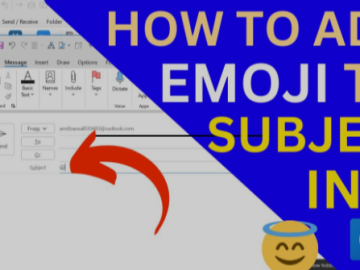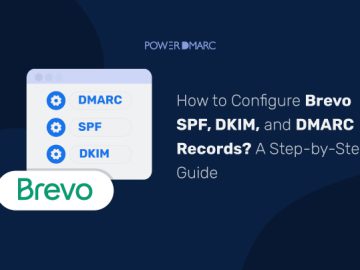As the holiday season approaches, Australian retailers are gearing up for the biggest shopping days of the year—Black Friday, Cyber Monday, Boxing Day and the New Year’s sales. Last year’s Intuit Mailchimp report found that two-thirds of marketers believe this time of the year drives between 21% and 40% of their company’s annual revenue. That may add a bit of pressure, right?
With every business competing for the same customer attention, standing out in a crowded market — and in crowded inboxes — is crucial. While compelling offers and smart discounts are key to boosting sales, there’s a silent but mighty force that could make or break every brand’s holiday campaign: email deliverability.
How can retailers increase the likelihood that their emails land in people’s mailboxes and not their spam folders? Here are some strategies and considerations to help ensure your brand cuts through the noise and speaks directly to your customers during the most crucial season of the year.
Why email engagement is key to deliverability
In 2024, an estimated 361.6 billion emails were sent and received daily, with companies upping their marketing efforts by 25% during the holiday shopping rush. Last year, Mailchimp customers alone sent 7 billion emails just in the time between Black Friday and Giving Tuesday. Given the high volume and frequency of messages, it’s no wonder some recipients might start ignoring emails — or worse, flag them as spam.
Email fatigue is a nightmare for marketers. It can sabotage a campaign’s success and hurt a brand’s reputation: two factors that both influence email deliverability.
Every time someone opens an email, clicks on a link, or interacts with your content, it signals to email service providers (ESPs) that your emails are valuable. However, if your emails are ignored, deleted, or marked as spam, ESPs might begin to view them as irrelevant or even harmful. That can be a one-way ticket to the spam folder.
Building a quality subscriber base
Having a large subscriber list is great, but if it’s full of inactive customers, it’s like shouting into the void. What every brand wants is an engaged audience that’s excited to open emails from them. Building a quality subscriber base takes time, but ultimately, it’s the best strategy for long-term engagement and email deliverability.
To achieve better open rates, brands should consider segmentation — personalising emails for the targeted audience. One tried-and-tested method is to email people based on how they’ve engaged with the brand in the last few months. This may mean sending a discount code to frequently engaged contacts to reward their loyalty or creating a re-engagement campaign to people who have become a little distant.
Maintaining good contact list hygiene is equally important. Marketers need to regularly clean their lists to remove outdated addresses and inactive subscribers to prevent hard bounces. Advanced CRM and reporting tools can help monitor subscriber engagement and manage contact lists effectively.
Crafting engaging content
Beyond technical deliverability, content quality is key in email marketing success. In fact, according to our report, Brand Trust in the Age of Information Overload, 51% of Australians and 47% of New Zealanders say they enjoy receiving emails from some brands. And when customers engage with the brand’s messaging, this in turn minimises unsubscribes and boosts engagement.
So how to get the email recipe right? Personalised content is the most popular, as is visually appealing email copy with clear fonts and spacing. Responsive, mobile-friendly design for enhanced readability wins points, too. Subject lines should be punchy — a maximum of 9 words with minimal punctuation — and highlight specific benefits, not generic slogans. It’s also important to employ strategically placed call to action (CTA) — short phrases that get customers to take action.
But how to make sure all these elements — subject lines, CTAs and visuals — pack enough punch to convert readers into buyers? That’s where A/B testing comes into play.
A/B testing lets marketers experiment with different versions of email to determine which performs better. Testing different wording for CTA or a subject line can reveal which phrases resonate most with the audience. For example, “Buy Now” versus “Get Yours Today” can yield different engagement levels and click-through rates. Sometimes, a little experimentation can lead to big results.
Maintaining sender reputation
Every brand’s sender reputation is like a credit score — critical and needs to be protected. In Australia, the Spam Act 2003 requires commercial emails to have recipient’s consent, clear sender information, and an unsubscribe option. Businesses must honour opt-out requests within five working days to avoid penalties.
Even beyond legal compliance, respecting subscriber preferences and offering transparent communication can strengthen the relationship with the audience, ultimately enhancing overall campaign success for every brand.
This involves sending emails in controlled batches to avoid triggering spam filters and fostering engagement by tracking opens, clicks, and replies. Using a reply-friendly email address is essential, as it signals legitimacy to both recipients and ISPs.
Prioritising connections
Our research shows that 60% of consumers start thinking about what they’re going to purchase during the holiday season before late November. For a lot of businesses, that means racing to capture their attention early. By implementing email best practices and leveraging analytics, marketers can make the most of this season.
Deliverability isn’t just about reaching the inbox. It’s about building genuine connections with the customers that drive engagement and sales, not just during the holidays, but all year long.
Anthony Capano is regional director for Australia & New Zealand at Intuit Mailchimp.





